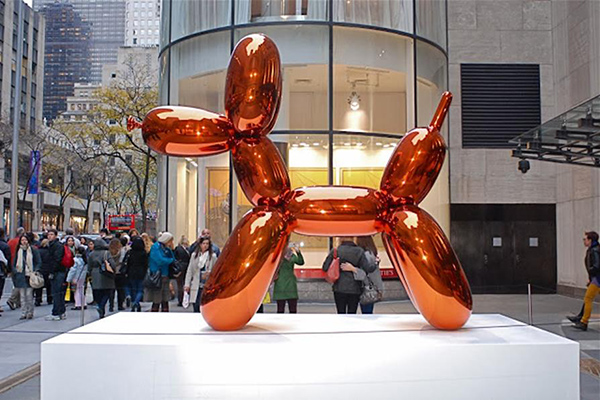
It is precisely this wow factor that registers concern for the Korean-born German philosopher,yung-Chul Han. In a critique of Koons’ work in Saving Beauty, Han draws attention to how the balloon dog functions as part of a larger cultural drift towards art and media that makes no demands, raises no questions, offers no depth, and eviscerates anything that is not comfortably smooth.
Jeff Koons says that an observer of his works should only emit a simple “Wow”. It seems that his art does not require any judgment, interpretation or hermeneutics, no reflection or thought. It intentionally remains infantile, banal, imperturbably relaxed, disarming an disburdening. It has been emptied of any depth, any shallows, any profound sense… The smooth only conveys an agreeable feeling, which cannot be connected with any meaning or profound sense. It exhaust itself in a “Wow”. [Byung-Chul Han, Saving Beauty, p. 3]
Koons’ output, from the balloon dogs to his 1986 Rabbit series, follows the logic of hyper-consumerism. Whereas genuinely good art invites us to grow into an appreciation of it, the balloon dogs meet us where we are in the banality of our spiritual sterility. These works validate us as nothing more than consumers, eliminating all friction as they enfold us in the effervescence of our complacency. Han thus describes these works as offering an aesthetics of anaesthetization since they seek to sedate our perception to anything other than the shallowness of our desires, particularly the desire to be wowed.
Positioning the artist and consumer in this type of relationship fundamentally alters the role context plays in the interpretative act. But that will be the topic of a follow-up post.

